© ROOT-NATION.com - Use of content is permitted with a backlink.
Are we alone in the Universe? Is the Universe infinite? Let’s take a look at the most important mysteries of the cosmos that science has not yet answered, at least for the time being.
Space has fascinated mankind since ancient times. The sky, full of stars, planets, comets and other phenomena, arouses our curiosity and fascination. We are also interested in the mysteries of our origin and existence, black holes and dark matter. At the same time, the Universe hides many mysteries to which we have no answers. Let’s take a look at some of these mysteries.
Read alsо: Geoengineering challenges: EU to ban scientists from ‘playing God’
Are we alone in the Universe?
This is one of the oldest and most fundamental questions of human existence. Is there life beyond Earth? Are these life forms intelligent and can we communicate with them? What does life outside our planet look like and how does it develop? What are the chances of meeting other civilisations? We do not have answers to these questions, although there are various hypotheses and research projects. For example, based on the Drake equation, scientists are trying to determine the number of potential civilisations in our galaxy, and the SETI (Search for Extraterrestrial Intelligence) programme is searching for radio signals from space. So far, however, we have not found any evidence of life beyond our planet. Although this could mean that it is very rare or very difficult to detect.
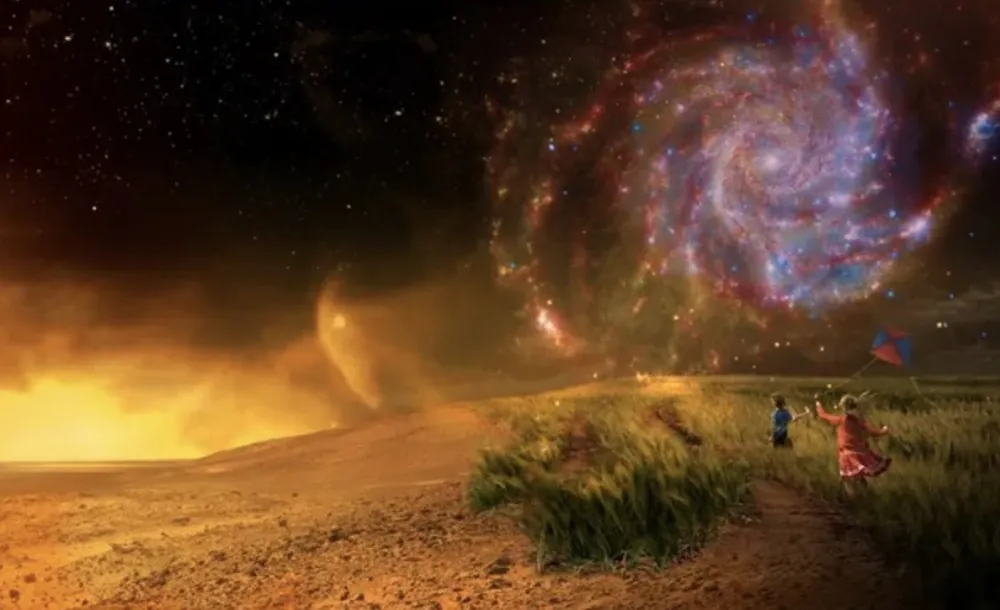 One of the arguments in favour of the existence of life in the Universe is its enormous size and diversity. According to current estimates, our galaxy contains about 100 billion stars, and the entire Universe that we can currently observe has about 100 billion galaxies. Scientists predict that at least 10 billion planets in the Milky Way are the size of Earth and are within the habitable zone of their star. That is, at a distance that allows water to exist on the surface in a liquid state. Some of these planets may have conditions similar to ours, or they may be completely different, but still favourable to life. It is also possible that alien life can withstand conditions that are unfriendly to us or completely different from those on Earth.
One of the arguments in favour of the existence of life in the Universe is its enormous size and diversity. According to current estimates, our galaxy contains about 100 billion stars, and the entire Universe that we can currently observe has about 100 billion galaxies. Scientists predict that at least 10 billion planets in the Milky Way are the size of Earth and are within the habitable zone of their star. That is, at a distance that allows water to exist on the surface in a liquid state. Some of these planets may have conditions similar to ours, or they may be completely different, but still favourable to life. It is also possible that alien life can withstand conditions that are unfriendly to us or completely different from those on Earth.

Another argument in favour of the existence of life in the Universe is its extraordinary ability to adapt and evolve. Scientists believe that life appeared on Earth about 3.5 billion years ago, and since then it has evolved in an amazing way, creating millions of species of plants and animals of all shapes, sizes and abilities. Life on Earth has survived many cataclysms and climate change, adapting to new conditions. This is happening even now in such extreme environments as hot springs, deep ocean trenches or Arctic glaciers. If life on Earth is so flexible and resilient, why shouldn’t it be the same elsewhere?
What was before the Big Bang?
According to the currently dominant cosmological theory, the Universe was formed about 14 billion years ago as a result of the Big Bang. It was the moment when all matter and energy were concentrated in an infinitesimal point of infinite density and temperature. The explosion triggered the rapid expansion of the Universe and its cooling, which continues to this day. But what happened before the Big Bang? Did another Universe exist? Was the Big Bang a unique event or part of a cycle? We do not have answers to these questions because classical physics cannot describe the state of the Universe before the Big Bang. However, there are various hypotheses based on quantum theories.
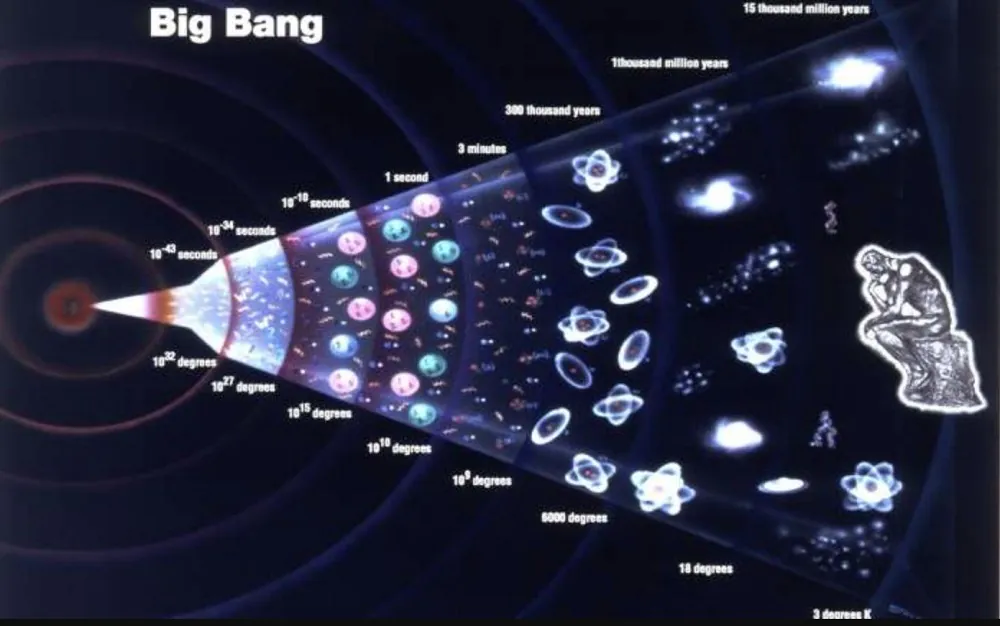
One of them is the so-called hypothesis of the initial singularity. It assumes that before the Big Bang there was nothing – no time, no space, no matter. All this was formed only at the moment of the explosion from a point of zero size and infinite density.
Another hypothesis is the so-called eternal inflation. It is assumed that before the Big Bang, there was a very high energy quantum field that expanded at an increasing rate. This field was unstable and subject to quantum fluctuations. In different places of the field, transitions to a lower energy state occurred chaotically, creating space bubbles with their own laws of physics. Each such bubble could be the beginning of another Universe. Our Universe would be one of these bubbles, which was formed about 14 billion years ago.

Another assumption is the so-called Big Bounce Hypothesis. It assumes that before the Big Bang, there was another Universe that was contracting and reached its minimum size. Then there was a rebound and a new phase of expansion began, and such cycles of contraction and expansion of the Universe can be repeated endlessly. This hypothesis is based on the theory of loop quantum gravity, which attempts to reconcile quantum mechanics with Einstein’s general theory of relativity.
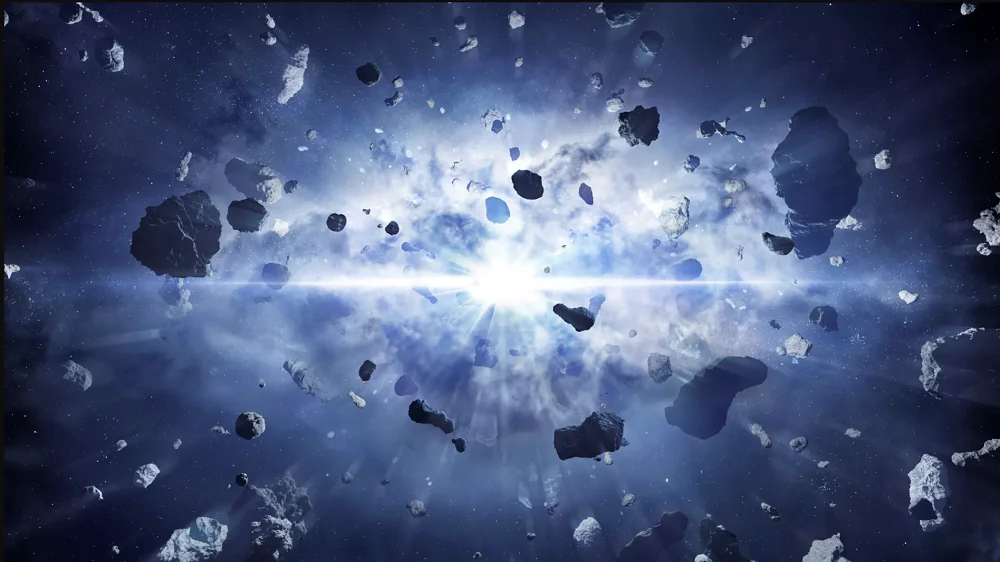
As you can see, the question of what happened before the Big Bang does not have a simple answer. We may never know, or we may have to change our understanding of time and space to find the answer. Although humanity has already proven that it can be surprising.
Read also: All about the new MuWNS navigation system: Works underground and underwater
How did life come into being?
Life is one of the greatest wonders of the Universe. Organisms capable of growth, reproduction, adaptation and evolution emerged from inanimate matter. But how did this happen? How did the first cells emerge from simple organic molecules, and how did all life forms on Earth evolve from them? We do not yet have definitive answers to these questions, although there are various theories and hypotheses about the origin of life. Some of them are based on experiments and observations, while others are based on fiction and speculation.
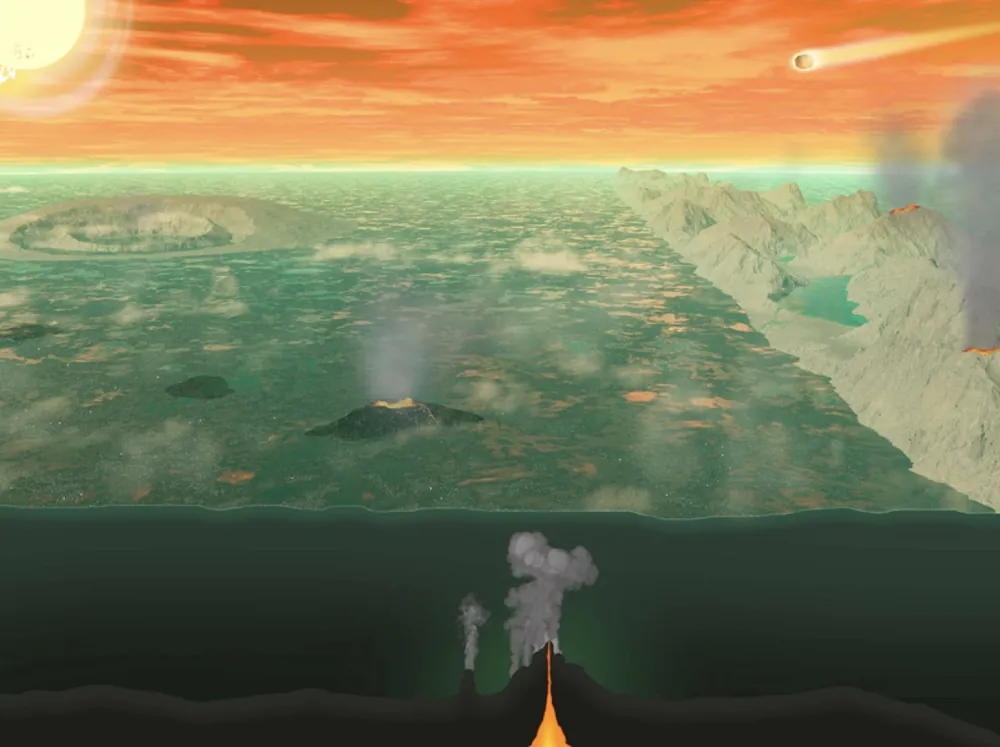
One theory is the so-called primary broth hypothesis. It is assumed that life originated in the oceans of the early Earth, where simple organic molecules such as amino acids, polypeptides, nitrogenous bases, and nucleotides existed. These compounds could have been synthesised in the atmosphere under the influence of electrical discharges or cosmic rays, and then released into the oceans. There they could combine into larger structures, such as proteins or nucleic acids. Over time, the first self-replicating systems could have emerged through natural selection.
The so-called clay hypothesis suggests that life originated on land, where aluminosilicate minerals with a crystalline structure existed. These minerals could have served as catalysts and templates for the creation and organisation of organic molecules. On the clay surface, layers of proteins and nucleic acids could form, from which the first cells surrounded by lipid membranes could form.
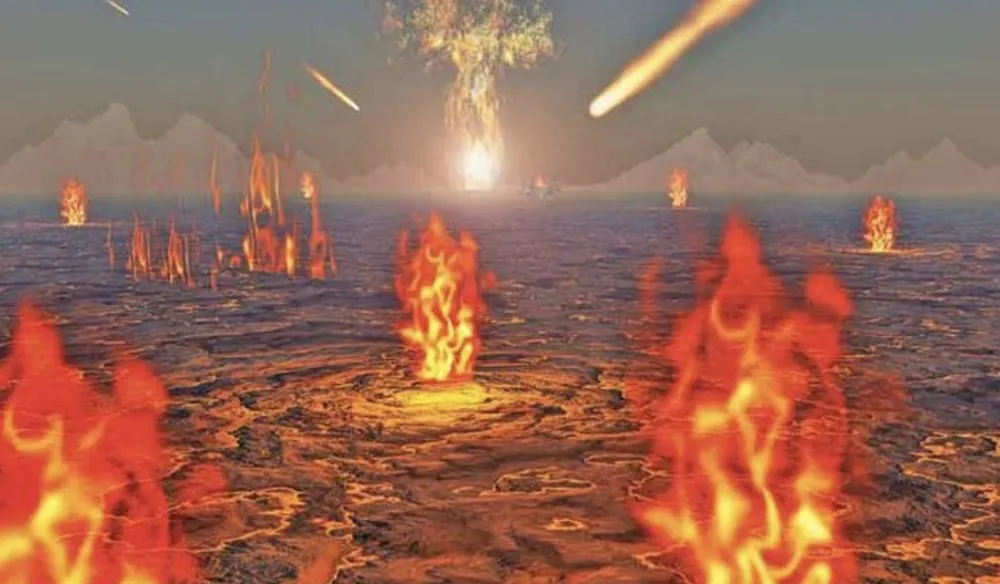
Another theory is that of so-called hydrothermal vents. It is assumed that life originated at the bottom of the ocean near hydrothermal craters, from which hot water rich in minerals and sulphur compounds comes out. In such an environment, simple organic molecules and thermal and chemical gradients can form, which favour biochemical reactions. The first cells protected from external conditions may have formed in rock crevices or chimney micropores.
There are many similar theories and hypotheses, but none of them has been proven. The question of the creation of life is still open. Could we have been resettled, for example, from Mars or Venus? Or maybe we were created from some kind of dark matter or energy?
Read also: Google Bard AI: everything you need to know
What is dark matter and dark energy?
Astronomical observations show that ordinary matter (atoms, particles, planets, stars, etc.) makes up only about 5% of the mass and energy of the Universe. The rest is so-called dark matter (about 27%) and dark energy (about 68%). Dark matter is invisible because it neither absorbs nor reflects electromagnetic radiation, but it has a gravitational interaction with other objects, without which galaxies could not hold together and would fall apart under the influence of rotation. Dark energy is a mysterious force that accelerates the expansion of the Universe and counteracts gravity. However, we don’t know exactly what dark matter and dark energy are, or how they were formed.
We know that Dark Matter exists because the amount of ordinary matter, i.e. matter made up of atoms or ions, in the Universe is too small to generate the gravitational interactions we observe. Why do I mention gravity here? Because it is a manifestation of the existence of matter. In simple terms, matter has mass, which is capable of exerting a specific gravitational influence on the environment. If we look at every galaxy, star, dust cloud in interstellar space, i.e. all the ordinary matter we know in the Universe, we will observe many more gravitational interactions than can be created by such an amount of matter. So there must be something else that explains the excessive gravity.
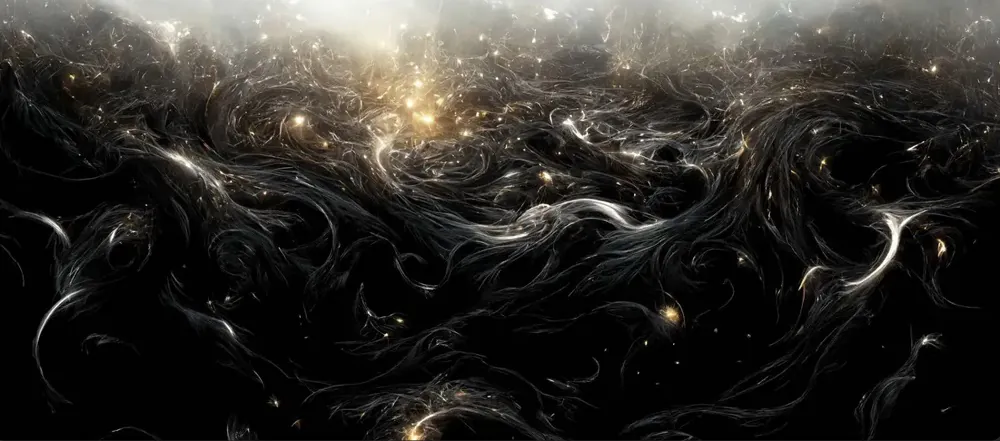
If there is an effect, there must be a cause. This is one of the most fundamental principles in science and observation of the world around us, which helps to make conclusions, discoveries and is one of the best guides in finding possible answers to questions that concern science. We know about the existence of dark matter thanks to a theory that describes how dark matter affects the rotational speed of stars in the arms of the Milky Way. It has been estimated that there should be only 0.4 to 1 kg of dark matter in our part of the Galaxy, which most likely occupies a space comparable to the size of the Earth.
The assumption that dark matter exists is now the dominant explanation for the anomalies in the rotation of galaxies that we observe and the motion of galaxies in clusters. That is, observations of galaxies prove the existence of dark matter.
Now let’s move on to dark energy. It is significantly different from dark matter. We know that its effect must be repulsive, which leads to an accelerated expansion of the Universe. This acceleration can be measured by observations, as galaxies move away from each other at a rate proportional to their distance.
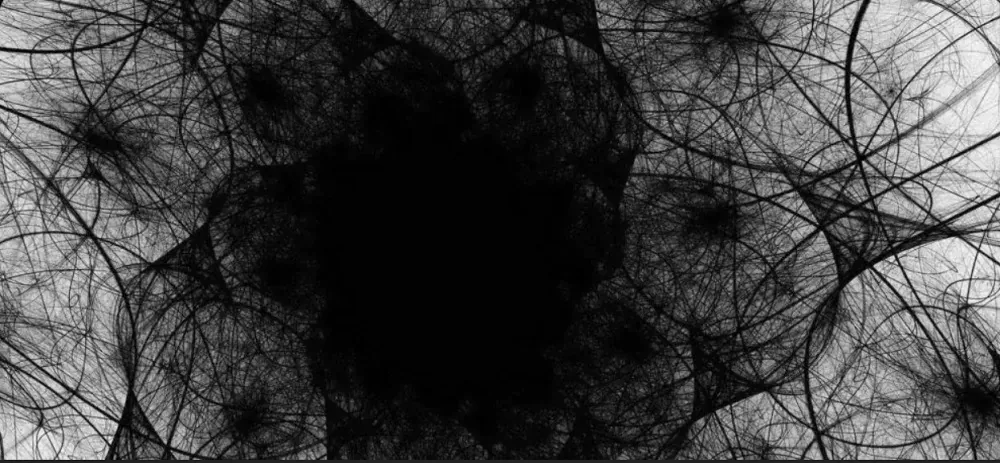
So, again, we have an effect, so there must be a cause. All current measurements confirm that the Universe is expanding faster and faster. Together with other scientific data, this has made it possible to confirm the existence of dark energy and estimate its amount in the Universe. Because of this repulsive property, dark energy can also be thought of as “antigravity”.
What is the difference between dark matter and dark energy? Despite its similar name, it is a mistake to think of dark energy as something that refers to other, known forms of energy, just as dark matter refers to ordinary matter. Moreover, dark matter and dark energy have completely different effects on the Universe.
Read alsо: What are 6G networks and why are they needed?
Is it possible to travel through time?
Time travel is a dream of many people, which is why we see a lot of literature and films on this topic. But is it physically possible? According to Einstein’s theory of relativity, time is not constant and absolute, but depends on the speed of the observer and the force of gravity. The faster we move, or the stronger the gravitational field, the slower time passes for us. This means that travelling to the future is possible if we reach a very high speed or approach a very massive object. For example, for an astronaut in Earth orbit, time passes a little slower than for a person on the planet’s surface. However, this difference is too small to be noticeable. To be able to travel to the future, we would have to move at a speed close to the speed of light or be near a black hole. However, both of these options are beyond our technical capabilities.
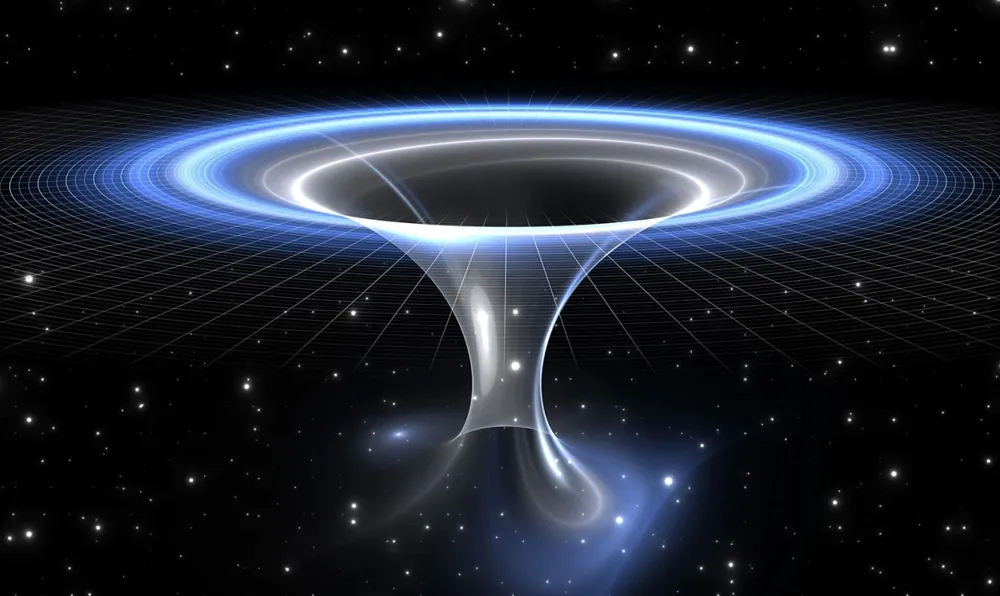
Travelling back in time is even more complex and controversial. It seems to be impossible, because it is forbidden by some physical laws. Some theories, however, allow for the existence of so-called closed time-like curves, i.e. paths in space-time, cycles in time that return to the same point. Such paths could allow us to travel backwards in time, but they would require very unusual conditions, such as a wormhole or a rotating black hole.
Theoretically, black holes can rotate, and this phenomenon is called a “rotating black hole” or “Kerr black hole”. In 1963, the American physicist Roy Kerr proposed a mathematical model of a black hole that rotates around its axis.
However, we do not know whether such objects exist and whether they are stable. In addition, travelling back in time gives rise to many logical paradoxes and cause-and-effect contradictions, such as the grandfather paradox – what happens if a time traveller kills his grandfather before his father is born? Some scientists try to explain these paradoxes by assuming the existence of multiple worlds or self-healing space-time.
Read also: The revolutionary device will search for life on other planets
Do parallel universes exist?
Is our Universe unique, or is it part of a larger structure, the so-called multiverse? Are there other universes where history and physics might have evolved differently? Can we interact with these worlds or visit them? These are questions that concern not only scientists but also writers and filmmakers. There are several hypotheses about the existence of parallel universes, such as string theory, the theory of eternal inflation, and the quantum mechanics interpretation of the multiverse. However, none of them has been confirmed either by observations or experimentally.
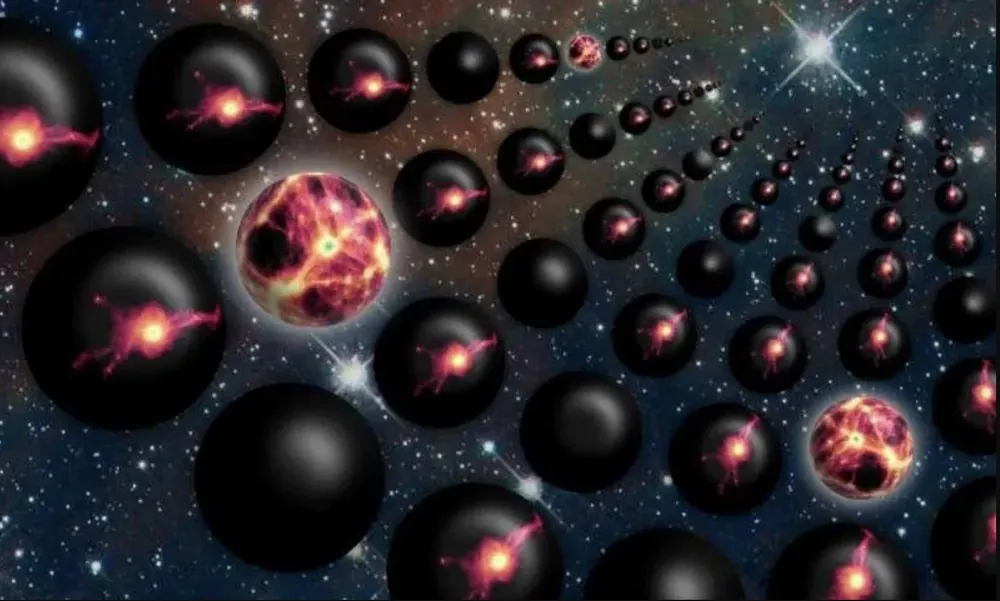
One of the hypotheses is the string theory, which assumes that the basic physical objects are not point particles, but one-dimensional strings oscillating in ten-dimensional space. String theory allows for the existence of hypothetical branes (membranes), which are multidimensional objects made of strings. Our Universe may be a similar brane suspended in a higher dimension. It is also possible that there are other branes separated from ours by a small distance. If two branes collided with each other, they could cause the Big Bang and create a new universe.

Another hypothesis is eternal inflation, which was mentioned above. It is associated with a very high energy quantum field that expands at an increasing rate.
An interesting hypothesis is the multiverse interpretation of quantum mechanics, which suggests that each quantum measurement leads to the branching of the universe into many possible outcomes. For example, if you measure the position of an electron in a hydrogen atom, you can get different values with a certain probability. Such an interpretation of the multiverse suggests that each of these values is realised in another universe and that we copy ourselves with each measurement. In this way, an infinite number of parallel universes are created, differing from each other in small details or completely different stories.
What happens inside black holes?
Black holes are cosmic objects with such a high density and gravitational force that nothing can escape from them, not even light. They are formed as a result of the collapse of the cores of dying stars or the merger of smaller black holes. Around every black hole there is a boundary called the event horizon, which marks the point of no return for everything that approaches it. But what happens beyond the event horizon? What is inside the black hole? We have no answers to these questions because classical physics cannot describe the conditions and processes inside a black hole. However, various hypotheses based on quantum or alternative theories are possible.
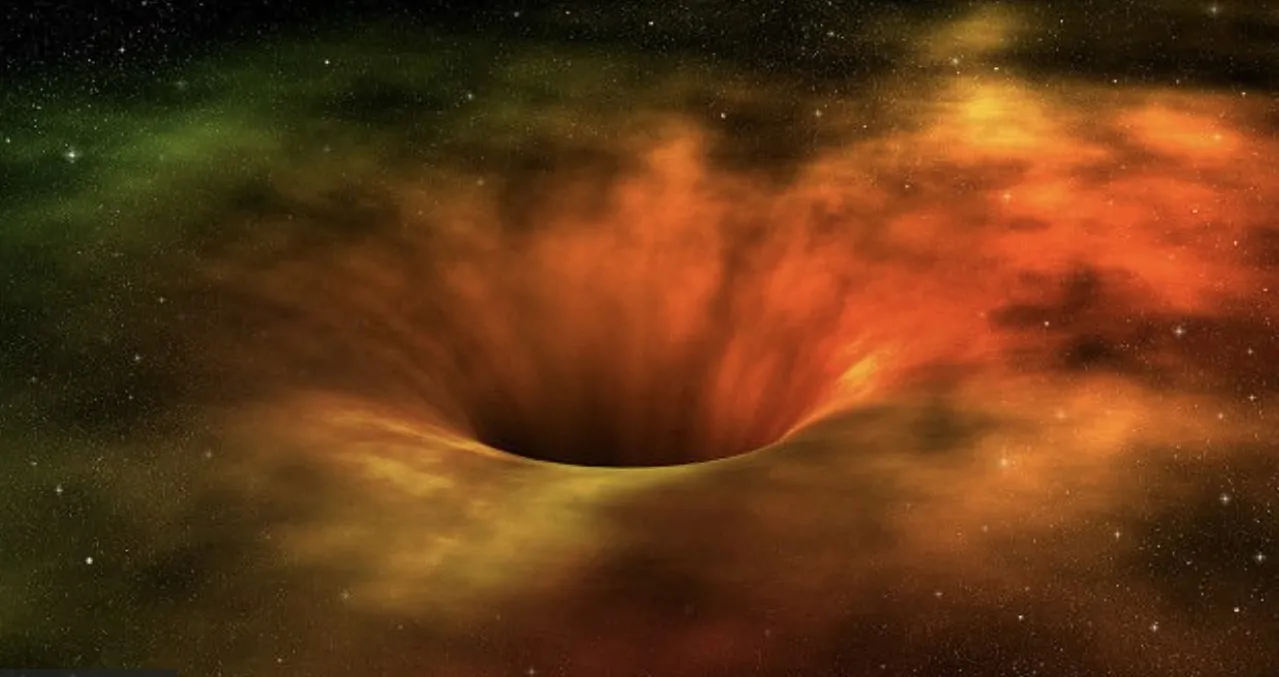
One of these assumptions is the singularity hypothesis. It states that all matter and energy inside a black hole is concentrated in one point of zero volume and infinite density and spacetime curvature. At this point, all the known laws of physics cease to apply, and we do not know what is happening there.
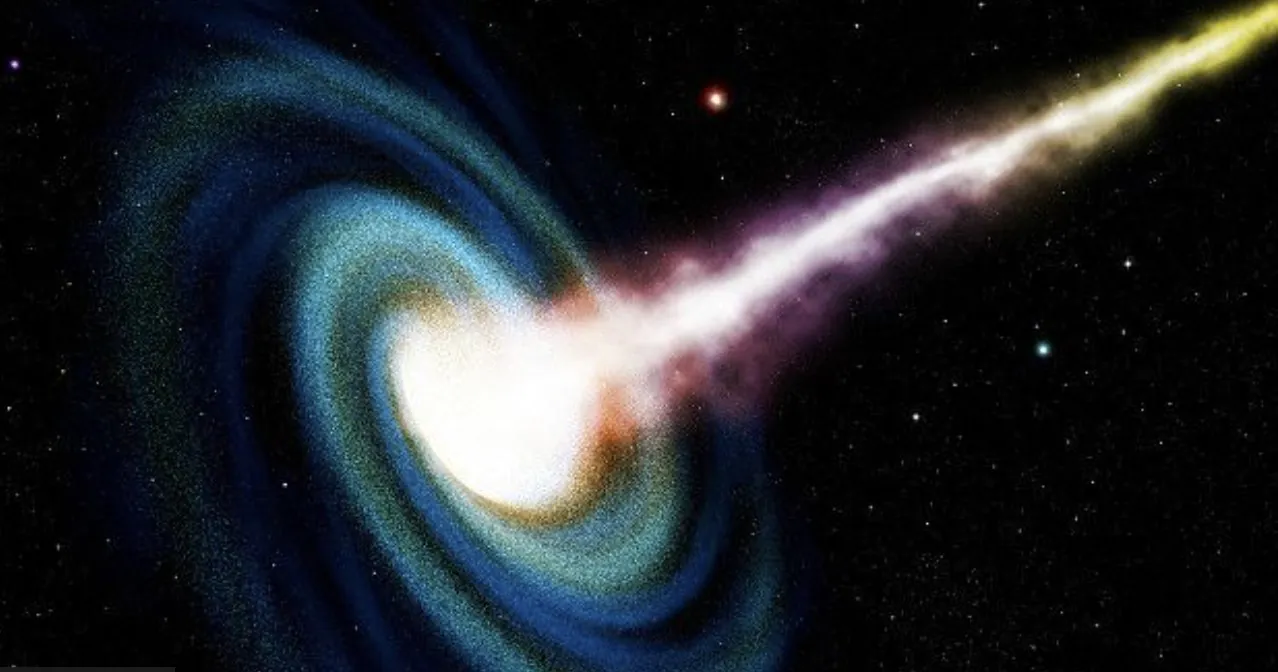 The Planck star hypothesis suggests that deep inside a black hole, matter is not compressed into a singularity, but into a state of extremely high density and temperature, in which the laws of quantum gravity (a combination of quantum mechanics and general relativity) apply. In such a state, matter could bounce off each other and form a spherical object with a radius close to the Planck length, the smallest possible length in physics. Its value is incredibly small: 20 orders of magnitude smaller than the size of an atomic nucleus. Such an object can emit Hawking radiation (quantum fluctuations above the event horizon) and gradually lose mass and energy until it explodes and releases all the contents of the black hole.
The Planck star hypothesis suggests that deep inside a black hole, matter is not compressed into a singularity, but into a state of extremely high density and temperature, in which the laws of quantum gravity (a combination of quantum mechanics and general relativity) apply. In such a state, matter could bounce off each other and form a spherical object with a radius close to the Planck length, the smallest possible length in physics. Its value is incredibly small: 20 orders of magnitude smaller than the size of an atomic nucleus. Such an object can emit Hawking radiation (quantum fluctuations above the event horizon) and gradually lose mass and energy until it explodes and releases all the contents of the black hole.

Another idea is the hypothesis of the so-called gravistars. It assumes that there is a layer of exotic matter with negative pressure at the border of the event horizon, which prevents the black hole’s interior from collapsing into a singularity. In this case, the interior of the black hole would be empty space with a constant density and zero temperature. Such a structure would be stable and would not emit Hawking radiation.
Read also: Blockchains of Tomorrow — Challenges and Solutions
Does the universe have an end?
The universe is infinite and has no boundaries – this is the simplest answer to this question. But what does it really mean, and how can we be sure of it? There are three possible scenarios: The universe is unlimited, finite and closed (e.g. in the shape of a sphere or torus), the universe is finite and open (e.g. in the shape of a saddle), or the universe is infinite and flat. We also don’t know what happens beyond the event horizon, the limit of the observable Universe that results from the limited speed of light.
Let’s start with what we know for sure. We know that the Universe is expanding, which means that the distances between galaxies are constantly increasing. We also know that the Universe is about 13.8 billion years old and that it was formed as a result of the Big Bang, a state of extreme density and temperature from which matter, energy, time and space emerged.
But what came before the Big Bang? And what is beyond the event horizon – the limit of the observable Universe beyond which we cannot see anything due to the limited speed of light? Is there an end to the Universe or a barrier?
Scientists believe this is unlikely. There is no evidence of such an end or barrier. Instead, the most acceptable model is the one in which the Universe is homogeneous and isotropic, meaning it is the same in all directions and places. Such a universe has no edge or centre and could be infinite in size.
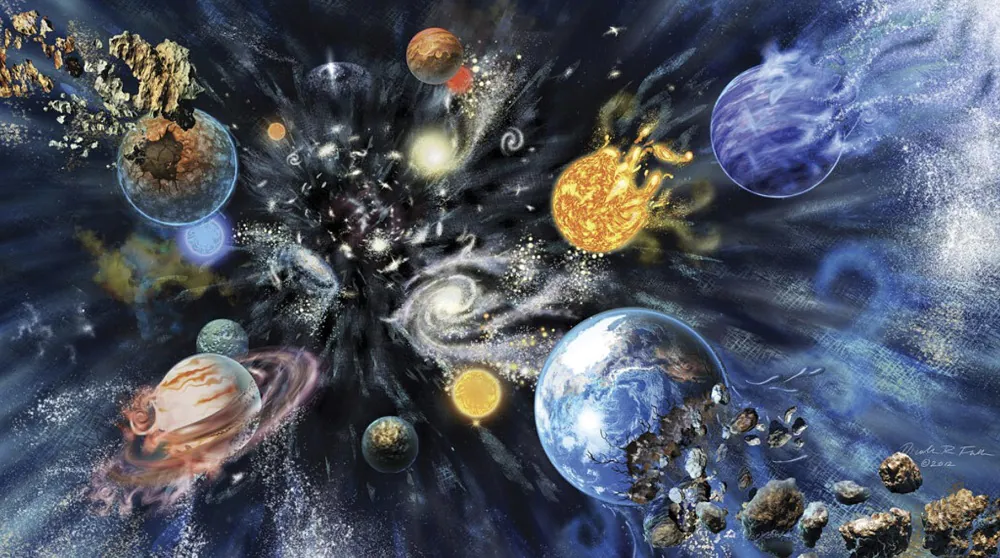
Of course, we can’t test this directly because we can’t travel faster than light or go beyond the observable Universe. But we can infer the properties of the entire Universe from what we can see within our reach. And all observations indicate that the Universe is homogeneous on a large scale.
This does not mean that there are no other options. Some alternative theories suggest that the Universe may be curved or have a complex geometric shape. It may also be part of a larger structure or have multiple copies or reflections.
Read alsо: 10 discoveries that prove Einstein right about the universe. And 1 that denies it
Is there a way to travel faster than light?
Faster-than-light travelling is the hypothetical possibility of matter or information moving faster than the speed of light in a vacuum, which is about 300,000 km/s. Einstein’s theory of relativity assumes that only particles with zero rest mass (e.g. photons) can travel at the speed of light, and that nothing can travel faster. It has been suggested that particles with a speed greater than the speed of light (tachyons) may exist, but their existence would violate the principle of causality and mean time travel. Scientists have not yet come to a consensus on this issue.
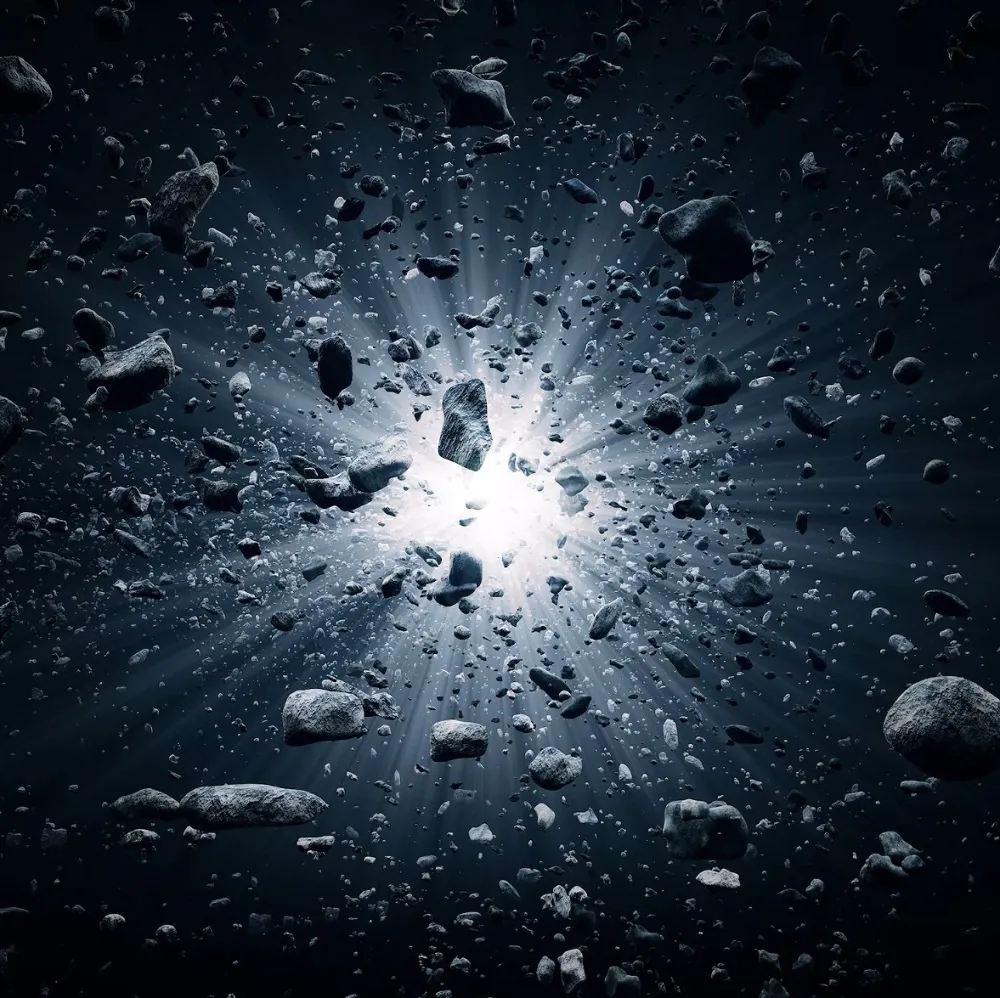
However, it has been suggested that some distorted regions of spacetime may allow matter to reach distant locations in less time than light in ordinary (“undistorted”) spacetime. Such “apparent” or “effective” regions of spacetime are not excluded by general relativity, but their physical plausibility is not currently confirmed. Examples are the Alcubierre drive, Krasnikov tubes, wormholes and quantum tunnelling.
The implications of faster-than-light travel on our level of knowledge of the cosmos are difficult to predict because they require new physics and experiments. One possible consequence could be the possibility of time travel and logical paradoxes related to causality. Another consequence could be the possibility of exploring distant stars and planets within a human lifetime. For example, the closest star outside the Solar System, Proxima Centauri, is about 4.25 light years away. Travelling at the speed of light would take only 4 years and 3 months, and travelling faster than light would take even less time.
Where are the planets going? What is happening to them?
Lost planets are hypothetical objects in the solar system whose existence has not been confirmed, but has been inferred from scientific observations. Today, there are scientific assumptions about the possibility of the existence of unknown planets that may be beyond the reach of our current knowledge.
One of these hypothetical planets is Phaeton, or Olbers’ planet, which could exist between the orbits of Mars and Jupiter, and its destruction would lead to the formation of an asteroid belt (including the dwarf planet Ceres). This hypothesis is currently considered unlikely, as the asteroid belt is too small to be formed by the explosion of a large planet. In 2018, researchers from the University of Florida discovered that the asteroid belt was formed from fragments of at least five or six planet-sized objects, not from a single planet.
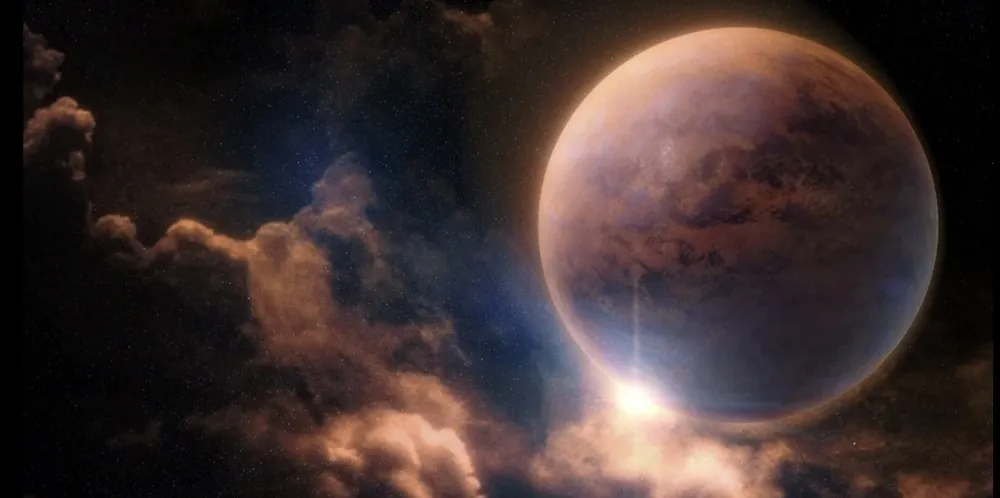
Another hypothetical planet is Planet V, which, according to John Chambers and Jack Lissot, once existed between Mars and the asteroid belt. The assumption of the existence of such a planet was made on the basis of computer modelling. Planet V may have been responsible for the Big Bang, which occurred about 4 billion years ago, resulting in numerous impact craters on the Moon and other bodies in the Solar System.
There are also various hypotheses about planets beyond Neptune, such as the Ninth Planet, Planet X, Tihe and others, which try to explain the existence of apparent anomalies in the orbits of some distant trans-Neptunian objects. However, none of these planets have been directly observed, and their existence is still under debate. However, scientists are still trying to study the space between Mars and Jupiter, beyond Neptune. Perhaps, in the future, we will find new hypotheses and discoveries.
It has always been important for humanity to know the answers about space, about the Earth and about itself. But so far, our knowledge is limited, although scientists are not standing still, trying to find answers, paving new paths into outer space. Because every question or mystery must have an answer. This is how humans work, and this is how the universe works.
Read alsо:
- How to install and use Windows without a key
- 4 types of batteries of the future that will power our devices

